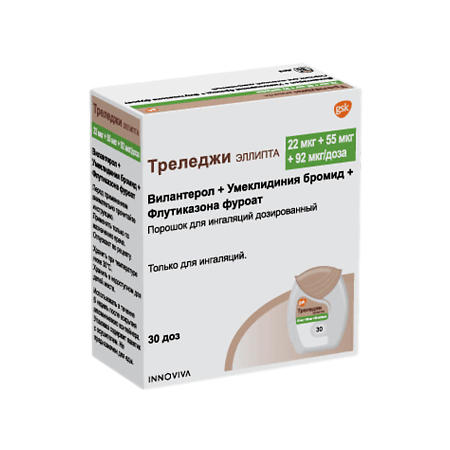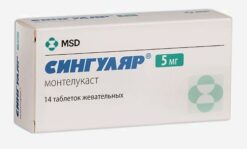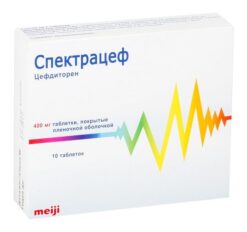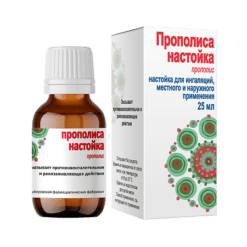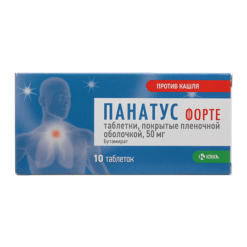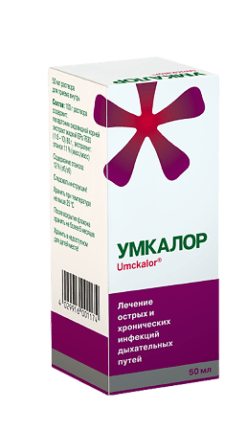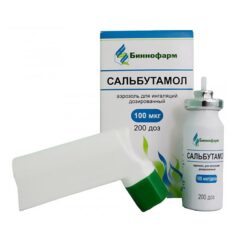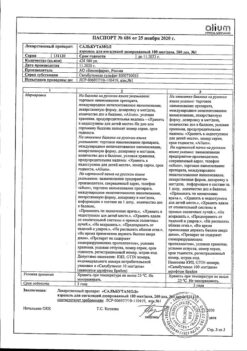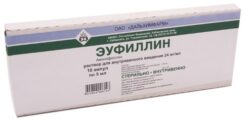No products in the cart.
Ellipta Trelease, 22 mcg+55 mcg+92 mcg/dose 30 doses
€130.64 €108.87
Out of stock
(E-mail when Stock is available)
Description
Pharmacotherapeutic group: Drugs for the treatment of obstructive airway diseases, adrenomimetics in combination with anticholinergic and glucocorticosteroids.
ATX code: R03AL08.
Indications
Indications
Active ingredient
Active ingredient
Composition
Composition
1 dose contains:
The active ingredients:
Vilanterol triphenatate micronized 40 µg,
Umeclidinium bromide micronized 74.2 µg.
Auxiliary substances:
Magnesium stearate, 75 mcg,
Lactose monohydrate, up to 12.5 mg.
How to take, the dosage
How to take, the dosage
The drug Trelegi Ellipta is for inhaled use only.
The patient should rinse his mouth with water after inhalation without swallowing.
Adults
The recommended and maximum dose is one inhalation of Treleji Ellipt once daily at the same time of day every day.
Children and adolescents
This medication is not indicated for the treatment of patients under 18 years of age, given the indications for use.
Patient special groups
Interaction
Interaction
Beta-adrenoblockers may impair or interfere with the action of beta2-adrenoreceptor agonists such as vilanterol. Cardioselective beta-adrenoceptors should be considered if beta-adrenoceptors are necessary; however, caution should be exercised when both non-selective and selective beta-adrenoceptors are used concomitantly.
Vilanterol and fluticasone furoate, components of Trelagee Ellipta, undergo rapid primary metabolism in the liver involving the cytochrome P450 isoenzyme CYP3A4. Caution should be exercised when concomitant use of the drug with strong CYP3A4 isoenzyme inhibitors (e.g., ketoconazole, ritonavir), because increased systemic effects of vilanterol and fluticasone furoate are possible, which in turn may lead to increased risk of adverse reactions.
The concomitant use of Trelagee Ellipt and other long-acting antimuscarinic agents or long-acting beta2-adrenoceptor agonists has not been studied and is not recommended because it may increase adverse reactions.
Directions for use
Directions for use
The first time you use your Ellipt inhaler, there is no need to check that it works correctly or to prepare your inhaler for use. Just consistently follow the recommendations for use below.
The Ellipta Inhaler carton contains:
The inhaler is packaged in a container. Do not open the container until you are ready to inhale the medicine. When you are ready to use your inhaler, remove the lid from the container. The container contains a desiccant packet to reduce humidity. Do not open this bag, it is not intended to be eaten or inhaled and should be discarded.
When you take the inhaler out of the container, its lid is in the closed position. Do not open it until you are ready to inhale the medicine. Write the date on the label of the inhaler in the designated “Use Before” box that corresponds to the date of opening plus 6 weeks. Do not use the inhaler after this date.
The following are step-by-step instructions for using your Ellipt inhaler.
I. Read the following information before using
When you open and close the lid of the Ellipt inhaler without taking the medicine, one dose is lost. This dose remains closed inside the inhaler, but it will not be available to take. You cannot accidentally get a large dose or a double dose in one inhalation.
II. Preparing the dose
Do not open the lid until you are ready to take the medicine.
Do not shake the inhaler.
III. Inhalation of medication
Even if you use your inhaler correctly, you may not taste or feel the medicine coming in.
If you want to wipe the mouthpiece, do so before you close the lid, using a dry tissue.
IV. Closing the inhaler and rinsing the mouthpiece
The inhaler should be kept at room temperature for at least one hour before being used in the refrigerator.
Special Instructions
Special Instructions
Trelegi Ellipta has not been evaluated in patients with bronchial asthma, so the use of this drug for therapy in this group of patients is not recommended.
The drug Trelegi Ellipta is intended for maintenance therapy of COPD. The drug should not be used to relieve acute symptoms, i.e. as emergency therapy to treat acute episodes of bronchospasm. A short-acting inhaled bronchodilator should be used to relieve acute symptoms. An increase in the frequency of use of short-acting bronchodilators to relieve symptoms indicates a worsening of disease control, in which case the patient should consult a physician. Patients should not discontinue treatment with Trelagee Ellipta without medical advice and monitoring, as symptoms may return after discontinuation.
As with other types of inhalation therapy, use of the drug may cause paradoxical bronchospasm accompanied by a rapid increase in wheezing, which may be life threatening. Treatment with Treleji Ellipta should be stopped immediately, the patient should be examined by a physician, and if necessary, alternative therapy should be prescribed.
Patients with moderate to severe impaired liver function using Treleji Ellipta require monitoring for the development of systemic adverse reactions associated with glucocorticosteroid use.
Systemic effects of glucocorticosteroids
Systemic adverse reactions may occur with the use of inhaled glucocorticosteroids (especially with long-term use at high doses). These reactions occur much less frequently than when using oral glucocorticosteroids. The manifestations of possible adverse systemic effects include: suppression of hypothalamic-pituitary-adrenal system function, decreased bone mineral density, cataract and glaucoma.
In keeping with the known effects of the class of inhaled glucocorticosteroids, cases of pneumonia (including pneumonia leading to hospitalization) have been observed in COPD patients using Trelage Ellipta. In some cases, when using inhaled drugs containing the glucocorticosteroid fluticasone furoate, including Treleji Ellipta, cases of pneumonia with a fatal outcome have been reported. Physicians should be aware of the possible development of pneumonia in patients with COPD, since clinical signs of this infectious disease coincide with symptoms of COPD exacerbation Risk factors for pneumonia in patients with COPD using inhaled glucocorticosteroid-containing medications include smoking, a history of pneumonia, low body mass index and severe COPD. These factors should be considered when prescribing therapy with Trelagee Ellipta, and treatment should be reconsidered if pneumonia occurs.
Contraindications
Contraindications
Patients with a history of severe allergic reactions to milk protein;
Patients with a history of hypersensitivity to the components of this combined agent;
Children under 18 years of age.
Adverse cardiovascular reactions such as arrhythmias (e.g., atrial fibrillation and tachycardia) may occur after using sympathomimetics and muscarinic receptor antagonists, including vilanterol and umeclidinium. In this regard, patients with severe forms of cardiovascular disease should prescribe Treleji Ellipta with caution. Given the antimuscarinic activity of this drug, it should be prescribed with caution in patients with closed-angle glaucoma or urinary retention. As with other medications that include glucocorticosteroids, Treleji Ellipta should be prescribed with caution in patients with pulmonary tuberculosis and in patients with chronic or untreated infections.
Side effects
Side effects
Data from clinical studies
The safety profile of Treligi Ellipt is based on data from 911 patients with COPD who used the drug at doses of 22 mcg + 55 mcg + 92 mcg once daily. The safety profile of Trelagee Ellipt is based on data from 911 patients with COPD who used the drug at 22 mcg + 55 mcg + 92 mcg once daily for up to 24 weeks (of which 210 patients used the drug at 22 mcg + 55 mcg + 92 mcg/dose once daily for up to 52 weeks) during a phase III clinical trial with the active comparison drug.
The adverse reactions presented below are listed according to organ and organ system involvement and frequency of occurrence. The frequency of occurrence is defined as follows: very common (â¥1/10), common (â¥1/100 and <1/10), infrequent (â¥1/1000 and <1/100), rare (â¥1/10000 and <1/1000), very rare (<1/10000).
The incidence of adverse reactions:
Infectious and parasitic diseases
Cardiac disorders: Infrequent: supraventricular tachyarrhythmia, tachycardia, atrial fibrillation.
Respiratory system disorders, thoracic and mediastinal organs:
Description of individual adverse reactions
Pneumonia
Of 1810 patients with late-stage COPD (mean forced expiratory volume (FEF1) at screening after bronchodilator use was 45% of the predicted value, standard deviation (SD) 13%) of which 65% of patients had a moderate/severe exacerbation of COPD in the year prior to study inclusion, the incidence of pneumonia was higher in patients using Trelage Ellipta (20 patients, 2%) than in patients using the budesonide-formoterol combination (7 patients, <1%).
Pneumonia requiring hospitalization developed in 1% of patients who used Trelagee Ellipta and in less than 1% of patients who used the budesonide-formoterol combination for up to 24 weeks. One case of fatal pneumonia was reported in a patient who used Trelagi Ellipta. In a subgroup of 430 patients treated for up to 52 weeks, the incidence of pneumonia reported in the groups treated with Trelagi Ellipta and the budesonide-formoterol combination was similar at 2%.
The incidence of pneumonia with Treleji Ellipta was comparable to that observed in the group receiving the combination of vilanterol and fluticasone furoate at a dose of 22 mcg + 92 mcg/dose in clinical trials using a combination of vilanterol and fluticasone furoate for COPD.
Overdose
Overdose
Pregnancy use
Pregnancy use
Additional information
| Shelf life | 2 years. After opening the aluminum container – 6 weeks. Do not use after the expiration date printed on the package. |
|---|---|
| Conditions of storage | Store at a temperature not exceeding 30 °C. Store out of the reach of children. |
| Manufacturer | Glaxo Operations UK Ltd, United Kingdom |
| Medication form | metered inhalation powder |
| Brand | Glaxo Operations UK Ltd |
Related products
Buy Ellipta Trelease, 22 mcg+55 mcg+92 mcg/dose 30 doses with delivery to USA, UK, Europe and over 120 other countries.

